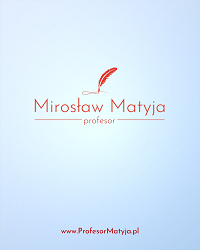Effects of Cooperative Learning Method (CLM) on Vocabularies and Grammars in Essay Writing
Abstract
Keywords
Full Text:
PDFReferences
Ames, C., & Ames, R. (1985). Research on motivation in education: Orlando: Academic Press, Inc. approaches (3rd Edition.). London: Sage Publications. Inc.
Ary, D., Jacobs, L.C., & Sorensen, C.K. (2010). Introduction to research in education (8th ed.). Australia: Wadsworth, Cengage Learning.
Basit, T.N. (2010). Conducting research in education context (1st ed.). New York: Continuum International Publishing Group
Breedon, T. & Mosley, T. (1991). The cooperative learning companion. Nashville, Tennessee: Incentive Publications.
Burden, R., & Williams, M. (1997). Psychology forlLanguage teachers: Social constructi-vist approach. Cambridge: CUP.
Christson, M. (1994). Cooperative learning in the EFL classroom in T. Kra (ed.). Teacher development: Making the right moves. Selected Articles from the English Teach-ing Forum, 1989-1993. Washington English Language Program Division.
Coe, R. (2002). Understanding, using and calculating effect size. Retrieved from: www.decd.sa.gov.au/quality
Cohen, J. (1988). Statistical power analysis for the behavioral sciences (2nd ed.).
Hillsdale, NJ: Erlbaum.
Cosio, M. (1998). Implementation of cooperative learning in Mexican High Schools. Un-published Doctoral Dissertation. University of Arizona: Mexico.
Creswell, J.W. (2009). Research design: A qualitative, quantitative, and mixed method
Elbow, P. (2000). Using the collage for collaborative writing. In everyone can write: Paragraphs toward a hopeful theory of writing and teaching writing. Oxford: Oxford University Press.
Elis, P.D. (2010). The essential guide to effect sizes. Cambridge: Cambridge University Press.
Guba, E.G., & Lincoln, Y.S. (1994). Competing paradigms in qualitative research. In N.K. Denzin & Y.S. Lincoln (Eds.), Handbook of qualitative research . Thousand Oaks, CA: Sage.
Hogue, A., & Oshima, A. and (1991). Writing academic English (2nd Edition.). In Brenda D. (2001). The Reader’s handbook. New York: Longman.
Ingleton, C., Doube, L., Nobel, A., & Rogers, T (2000). Leap into collaborative learning. centre for learning and professional development (CLPD). The University of Adelaide: Australia.
Johnson, D.W. & Johnson, R.T. (1998). Cooperative learning and social interdependence theory. In R. Trindale, L., et al., (Eds.), Theory and research on small groups (. New York: Plenum, Social Psychological Applications to Social Issues, (4), 9-36.
Johnson, D.W. Johnson, R.T. and Holubec, E.J. (1993) Cooperative learning in the class- room. Alexandria: Association for supervision and curriculum development.
Johnson, D.W., & Johnson, R.T. (1994). Learning together and alone. London: Allyn and Bacon.
Johnson, D.W., & Johnson, R.T. (2009). An educational psychology success story: Social inerdependence theory and cooperative learning. Educational Researcher, 38(5), 365-37.
Johnson, D.W., Johnson, R.T., & Holubec, E.J. (1994). The new circles of learning: Co-operation in the classroom and school. Boston: Association for Supervision and Curriculum Development.
Kirk, T. (2005). Enhancing teaching and learning through cooperative learning. Retrieved from http://www.aect.org.Intranet/Publications/edtech/35/35-04.html
Kline, F., & Lerner, J. (2006). Learning disabilities and relateddisorders. Characteristics and teaching strategies (10thEdition.). Boston: Houghton Mifflin Company.
Moffet, J.M. (1996). Effective technique for English conversation group Washington: USA Information Agency Performance.
Nagata, K., & Ronkowski, S. (1998). Collaborative learning: Differences between collabo-rative and cooperative learning. The Office of Instructional Consultation, University of California Santa Barbara.
Schultz, A. (1999). Foreign language instruction and curriculum. The Education Digest, 64 (7), 29-37.
Seliger, H.W., & Shohamy, E. (1989). Second language research methods. Oxford. Oxford University Press.
Slavin, R.E. (1991). Synthesis of research on cooperative learning. Educational Leadership, (48), 71-82.
Stahl, R.J. & VanSickle, R. L. (1992). Cooperative learning in the social studies classroom: An invitation to social studies. Washington, DC: National Council for the Social Studies.
Stenlev, J. (2003). Cooperative learning in foreign language teaching. The Copenhagen Day and Evening College of Teacher Training
Tuan, L.T. (2010). English Language Teaching, (3)2. Retrieved from www.ccsenet.org/elt Infusing Cooperative Learning into an EFL Classroom. National University of Ho Chi Minh City University.
Vanderstoep, S., & Johnston, D. (2009). Research methods for everyday life: Blending qualitative and quantitative approaches. San Francisco: John Wiley and Sons, Inc.
Vygotsky, L.S. (1978). Mind in society. Cambridge, MA: Harvard University Press.
Westwood, P. (2003). Common sense methods for children with special educational need (4th Ed.). London: Routledge Falmer.
DOI: https://doi.org/10.33258/birle.v2i1.181
DOI (PDF): https://doi.org/10.33258/birle.v2i1.181.g265
Article Metrics
Abstract view : 255 timesPDF - 249 times
Refbacks
- There are currently no refbacks.

This work is licensed under a Creative Commons Attribution-ShareAlike 4.0 International License.

This work is licensed under a Creative Commons Attribution-ShareAlike 4.0 International License

_.gif)



















_.gif)



